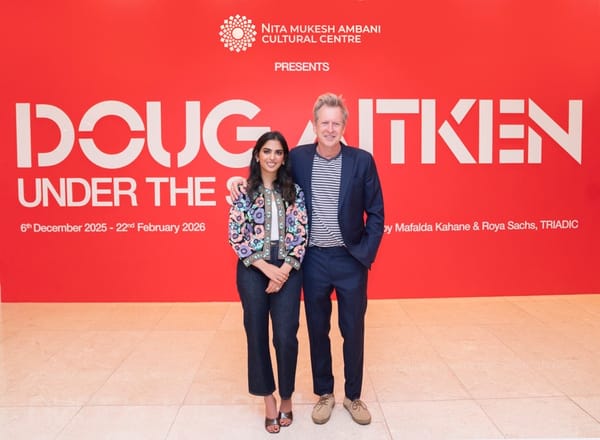The Benefits of Art Education in Early Childhood Development
Art education in early childhood fosters creativity, critical thinking, and emotional expression. It enhances cognitive, motor, and social skills while promoting cultural awareness, building self-confidence, and laying the foundation for well-rounded, lifelong development in young children.

Early childhood is a crucial stage in a child’s development, during which they undergo rapid physical, cognitive, emotional, and social growth. At this time, children are highly receptive to experiences that shape their abilities and perspectives. While much attention is given to academic subjects such as math and reading, art education plays a pivotal role in fostering well-rounded development. Often seen as an enrichment activity, art education for young children is now recognized by educators and developmental psychologists as essential for supporting holistic growth.
Art education in early childhood encompasses more than painting and drawing. It includes exposure to a variety of creative experiences such as music, dance, drama, sculpture, and craftwork. By engaging in artistic activities, children develop a wide range of skills that contribute to their overall growth. Art also provides a unique avenue for children to express themselves and explore the world around them. This article will explore the significant benefits of art education in early childhood development, focusing on its impact on cognitive, emotional, physical, and social growth.
1. Cognitive Development: Enhancing Creativity and Critical Thinking
Art education promotes cognitive development by fostering creativity and imagination, which are critical during early childhood. Young children are naturally curious and eager to explore their surroundings, and art offers them an outlet to experiment with different ideas and perspectives. Engaging in creative activities such as drawing, painting, and sculpting stimulates cognitive processes related to problem-solving, critical thinking, and decision-making.
When children participate in artistic activities, they make choices about the materials they use, the colors they select, and the forms they create. These decisions require them to think critically and engage in trial and error. For example, a child creating a painting may need to decide how to blend colors or how to represent an object on paper. This experimentation promotes flexible thinking and helps children approach problems from multiple angles.
Research conducted by the National Endowment for the Arts has shown that exposure to art in early childhood improves cognitive abilities such as memory, attention span, and spatial reasoning. The creative process of making art engages both the right and left hemispheres of the brain, enhancing the ability to integrate logical and creative thinking. These cognitive skills are transferable to other subjects, such as science, mathematics, and literacy, and lay the groundwork for future academic success.
Additionally, art education enhances visual-spatial skills, which are crucial for understanding geometry, architecture, and even engineering. Studies show that children who engage in visual arts activities demonstrate stronger spatial reasoning skills than those who do not, which in turn supports learning in science, technology, engineering, and math (STEM) fields.
2. Emotional Development: Fostering Emotional Expression and Regulation
One of the most significant benefits of art education in early childhood is its impact on emotional development. Young children often struggle to articulate complex feelings through language. Art provides a nonverbal way for them to express their emotions, thoughts, and experiences. Through artistic expression, children can communicate feelings of joy, frustration, fear, or excitement in a way that feels safe and constructive.
Engaging in creative activities allows children to explore their emotions and experiences in a reflective and controlled manner. Whether they are working with paint, clay, or crayons, children use art as a medium for self-expression. This process is often therapeutic, allowing them to process feelings that they might not yet have the vocabulary to explain. For instance, a child who feels anxious or upset might draw a picture that reflects their inner world, offering educators and caregivers insight into their emotional state.
Art also helps children develop emotional regulation skills. The act of creating can be soothing and meditative, helping children calm down when they feel overwhelmed or stressed. The repetitive motions of drawing, painting, or molding clay can have a grounding effect, similar to mindfulness exercises. Furthermore, art projects require patience and persistence, teaching children to manage frustration and take pride in their achievements. Learning to work through challenges in art fosters a growth mindset, which is essential for resilience in all areas of life.
3. Development of Fine and Gross Motor Skills
Art education supports physical development, particularly the refinement of both fine and gross motor skills. Fine motor skills involve the coordination of small muscles, especially in the hands and fingers, which are necessary for tasks such as writing, cutting, and manipulating objects. Artistic activities like drawing, coloring, cutting with scissors, and working with clay or beads require precise hand movements that help children strengthen these muscles.
When children engage in activities like painting or using crayons, they develop hand-eye coordination, dexterity, and control over small movements. These fine motor skills are critical not only for future academic tasks, such as writing, but also for everyday tasks such as tying shoes or buttoning a coat.
Gross motor skills, which involve larger muscle groups, are also enhanced through certain types of artistic activities. For example, creating large-scale art, such as murals or sculptures, involves physical movement that promotes balance, coordination, and spatial awareness. Performing arts, such as dance and drama, are particularly effective in improving gross motor skills as they involve whole-body movements that strengthen muscles and improve coordination.
Research has demonstrated that children who participate in visual arts and performance arts tend to show more advanced motor development compared to peers who do not engage in such activities. These physical skills not only support artistic endeavors but also contribute to success in sports and other physical activities.
4. Social Development: Building Collaboration and Communication Skills
While art is often seen as a solitary activity, it also offers numerous opportunities for social development. In a group setting, art education fosters collaboration, communication, and cooperation among children. Group art projects, such as creating a mural or putting on a play, require children to work together, share ideas, negotiate roles, and solve problems collectively. These experiences help children develop social skills that are essential for building relationships and functioning in a community.
Art classes provide a platform for children to engage in meaningful conversations with their peers and teachers. By discussing their artwork and providing feedback on others’ creations, children learn how to express their thoughts and feelings in a constructive manner. They also learn to listen to and appreciate different perspectives, which fosters empathy and understanding. This sense of collaboration helps build a child’s self-confidence as they see their contributions valued by others.
Moreover, art education can bridge cultural and language gaps in diverse classrooms. Children from different cultural backgrounds can express their unique identities through art, and in doing so, they foster mutual respect and appreciation for diversity. The collaborative nature of art helps children develop a sense of belonging and inclusion, promoting positive social relationships.
5. Cultural Awareness and Appreciation
Art education in early childhood introduces children to various cultures and artistic traditions from around the world. Exposure to a wide range of art forms—whether it be African masks, Aboriginal dot paintings, or Renaissance portraits—allows children to learn about different histories, customs, and values. This cultural awareness fosters an appreciation for diversity and helps children develop a global mindset.
By learning about art from different cultures, children begin to understand that there are multiple ways of seeing and interpreting the world. This exposure promotes open-mindedness and curiosity, encouraging children to ask questions and explore new ideas. In an increasingly globalized world, this kind of cultural awareness is essential for fostering empathy and cooperation among people from different backgrounds.
6. Enhancing Imagination and Creative Problem-Solving
One of the most profound benefits of art education is its ability to spark imagination and enhance creative problem-solving skills. When children are encouraged to explore their ideas freely through art, they learn to think outside the box and approach problems from unique angles. This kind of divergent thinking is essential for innovation and is highly valued in today’s rapidly evolving world.
Art activities often present children with challenges that require creative solutions. For example, a child working on a sculpture might need to figure out how to make the materials stick together or how to represent a specific shape. These tasks require them to experiment, take risks, and think creatively—all skills that are transferable to other areas of life.
Furthermore, imaginative play through art helps children develop abstract thinking, which is crucial for understanding complex concepts in subjects like math and science. For instance, when children engage in imaginative role-playing activities, they practice symbolic thinking—using one thing to represent another—which is a fundamental cognitive skill for understanding concepts such as numbers, letters, and language.
7. Building Self-Confidence and Independence
Art education empowers children by giving them the opportunity to take ownership of their creations. Unlike many structured academic activities, art is open-ended, allowing children to make choices and take risks. This sense of autonomy helps build self-confidence as children see their ideas come to life and receive recognition for their efforts.
When children complete an art project, they experience a sense of accomplishment and pride in their work. This boost in self-esteem encourages them to take on new challenges and to believe in their abilities. Additionally, the freedom to express themselves in art helps children develop a strong sense of identity and independence, as they learn to trust their instincts and express their unique perspectives.
Conclusion
The benefits of art education in early childhood development are multifaceted, impacting children’s cognitive, emotional, physical, social, and cultural growth. By engaging in creative activities, children not only enhance their fine and gross motor skills but also develop critical thinking, emotional regulation, and social skills that are essential for lifelong success. Art offers a powerful medium for self-expression, cultural exploration, and imaginative play, laying the foundation for well-rounded development.





